Past and Present: Duryea Presbyterian, Prospect Heights’ Apartment Church
A look at Brooklyn, then and now. Most of my Past and Present entries tell the story of what happened to buildings that are no longer — but this one is about a much-hyped building that never was. Houses of Worship in Prospect Heights With very few exceptions, Brooklyn’s brownstone neighborhoods live up to the…
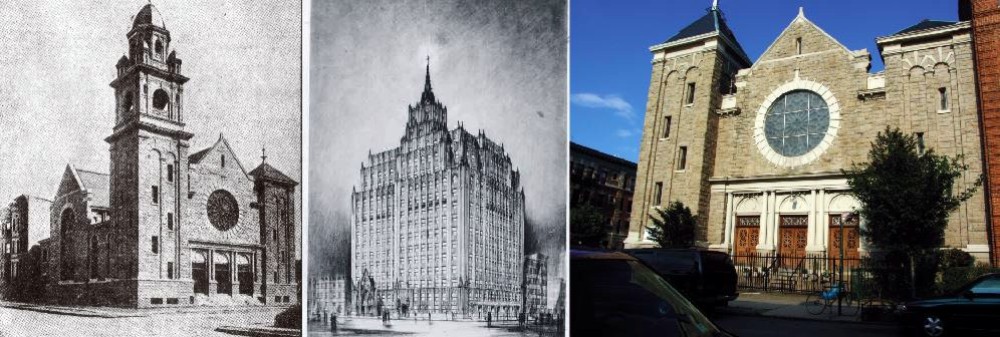
A look at Brooklyn, then and now.
Most of my Past and Present entries tell the story of what happened to buildings that are no longer — but this one is about a much-hyped building that never was.
Houses of Worship in Prospect Heights
With very few exceptions, Brooklyn’s brownstone neighborhoods live up to the 19th-century epithet “City of Churches.” Many of our neighborhoods can boast of a church seemingly on every other corner, and some have more than one on a corner.
Prospect Heights is therefore an anomaly. It’s a later-19th-century community, developed at the same time as parts of Park Slope, Crown Heights North and Bedford Stuyvesant, but unlike those neighborhoods, very much lacking in large houses of worship.
Some architectural historians theorize that many of Prospect Heights’ first homeowners came to the neighborhood from across Flatbush Avenue in Park Slope, and continued to worship in their old churches. Plus, by the end of the century it was easier to get around and worship wherever one wanted.
However, that doesn’t mean Prospect Heights had no historic houses of worship.
St. Joseph’s Catholic Church on Pacific Street has been a neighborhood fixture since 1861. The magnificent 1912 building we see today replaced an older church building. It was built for the Irish workers who moved into that area, decades before the upscale row house development of the 1880s and ’90s.
Over on the other end of Prospect Heights, Union Temple was built much later, in 1929. This Reform congregation was formed by the 1921 merger of Williamsburg’s K.K. Beth Elohim and Bedford’s Temple Israel.
Their 11-story building, on Eastern Parkway across from the library, was supposed to be their community house, but the Great Depression prevented that from happening and they stayed here, making this building the temple.
This idea of a high-rise house of worship brings us to our last great Prospect Heights church, and the topic of our story: the Duryea Presbyterian Church.
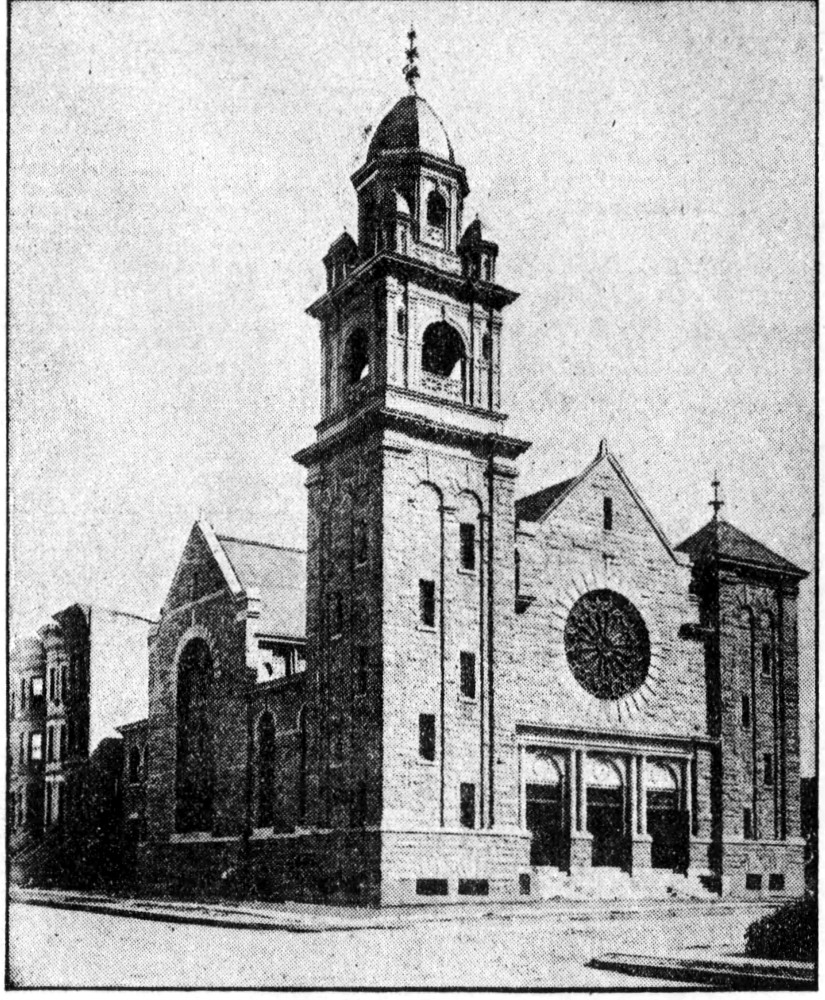
Brooklyn Eagle, 1906
Duryea Presbyterian Church on Underhill Avenue
The Duryea Presbyterian Church was founded in 1887 by the Reverend Samuel P. Halsey as an offshoot mission church of the Classon Avenue Presbyterian Church. Duryea Presbyterian was named for the Rev. Joseph P. Duryea, Classon Avenue’s founder and first pastor.
The first church building was located on Clermont Avenue, near Atlantic Avenue, in the heart of a busy part of Fort Greene.
In 1893, a new minister was installed at Duryea, the Reverend John E. Fray. He was soon quite popular, as well as controversial. He saw his mission as getting more bodies in church on Sundays, especially young people.
He began offering more programs to interest young adults, but the controversy occurred when he began using the young ladies of the congregation as ushers.
The Rev. Fray’s first service with girls as ushers brought in crowds of curious guests. It also brought in a lot of young men. The girls, some of whom were quite pretty, performed their usher duties with no problems, and many young men decided that church wasn’t such a boring place, after all.
At any rate, Rev. Fray’s church grew and needed to expand. It was in a very noisy location, though, with the LIRR train lumbering by its door, and the loud trolleys and traffic of Atlantic and Fulton. By 1902, the congregation started to talk about building a new church elsewhere.
But by that time, Rev. Fray was gone, replaced by the Rev. Dr. William Denman. Trust me, there’s a story there.
Rev. Denman told the Eagle that Clermont Street was now home to “throngs of Italians,” and he thought it would be nice for them to have their own church, with an Italian minister. However, the building was sold to Bethany Baptist Church, a “colored” congregation.
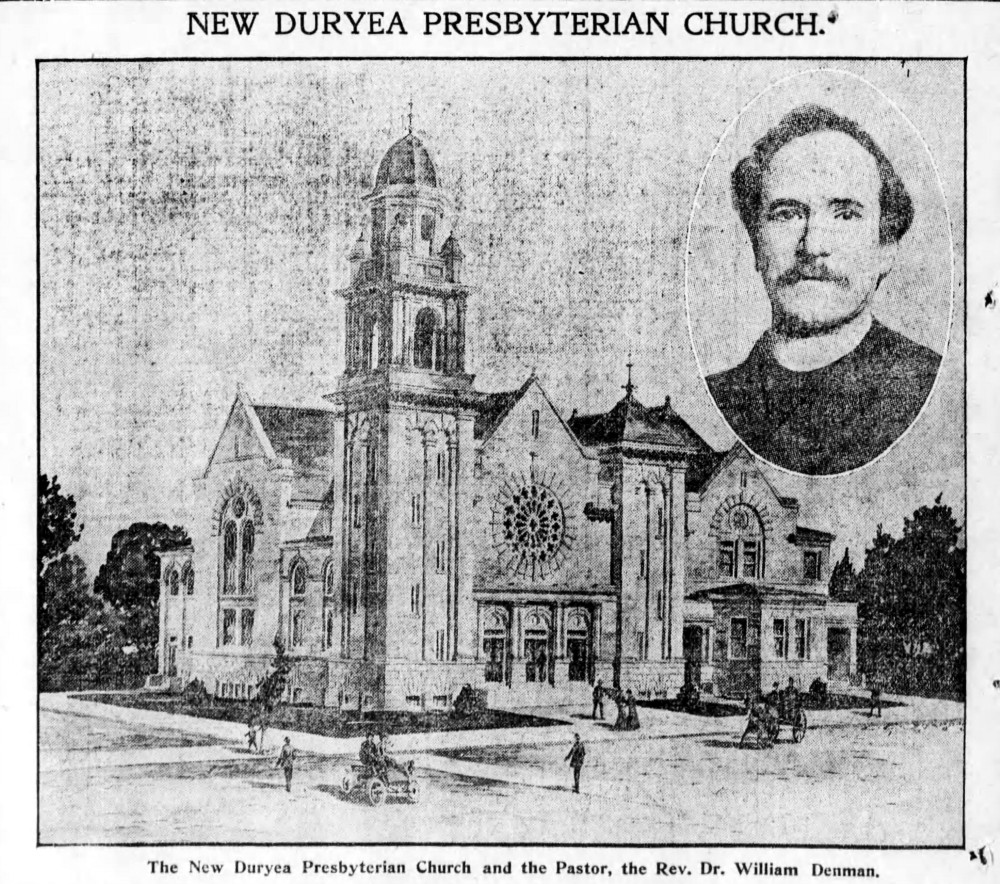
Brooklyn Eagle, 1905
Anyway, many of their most influential congregants had moved to the new houses in Prospect Heights, so the building committee looked in that direction and purchased a plot of land at 185 Underhill Avenue on the corner of Sterling Place.
The well-known church architectural firm W.O. Weaver & Son designed a large, beautiful Romanesque revival church made of rough-faced granite. The building had a large corner tower with an open belfry and a domed roof. The church was finished in September of 1905.
Rev. Denman left soon after the church was finished, in part over disagreements about the building of the church. His replacement, the Rev. William Isaac Davenport, was in charge in 1913, when lightning hit the spire during a severe summer storm. It knocked much of the slate off the roof and allowed a flood of water inside, severely damaging parts of the interior. Repairs cost several thousand dollars.
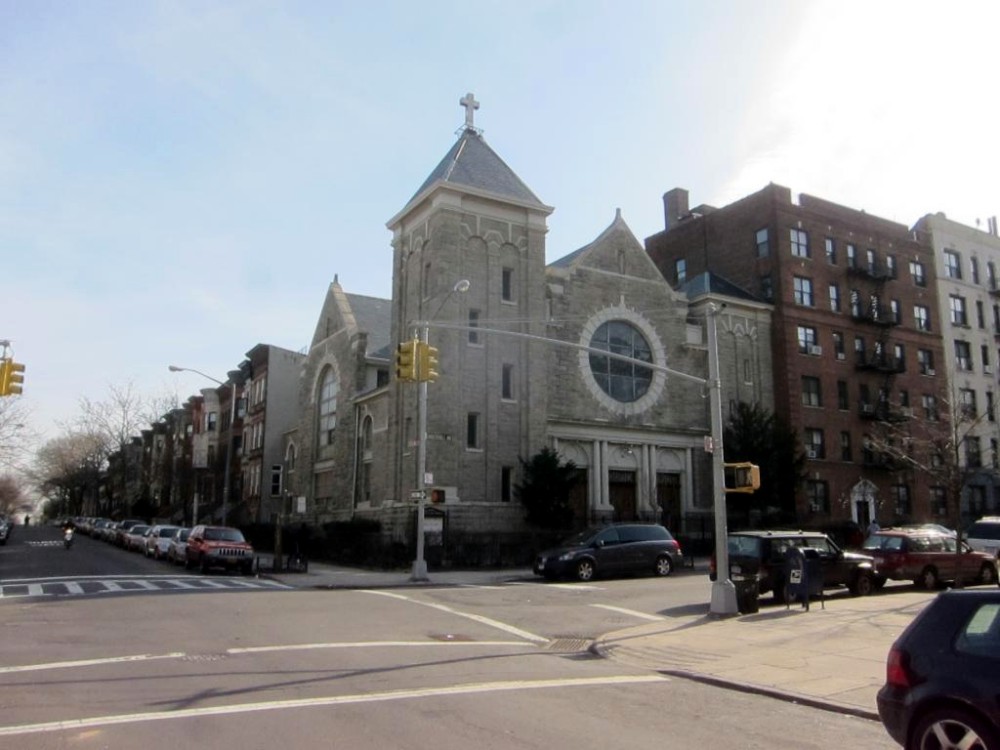
Photo by Nicholas Strini for PropertyShark
The Duryea Presbyterian Apartment Church
By 1929, the church was under the leadership of the Rev. William G. Clark-Duff. Duryea Presbyterian’s church building was now 25 years old. It needed some repairs, especially on the roof and in the domed steeple, which was still problematic after the lightning strike.
The building committee and trustees got together to figure out what to do, and Rev. Clark-Duff had The Great Idea.
Why not build a new building? And not just a church, where the only source of income for maintenance needs was from the collection plate. Why not combine worship and profit? Why not build a 15-story combination church and apartment building?
The idea wasn’t entirely new. Calvary Baptist Church on West 57th Street in Manhattan had just done it. So had Second Presbyterian Church on the Upper West Side. The new building would have a sanctuary on the ground floor, with church rooms and offices above and in the basement, as needed, with apartments above that.
Rev. Clark-Duff had also been inspired by the nearby Union Temple. He had allowed them to worship in his space while their temple was being built and had really admired the vertical use of space. He made arrangements for Duryea to worship at Union while the new building was being built, if the plan was approved.
The church got a prominent local architect, Murray Klein, to design the new building. His sketch was printed on the front page of the Eagle on February 2, 1930.
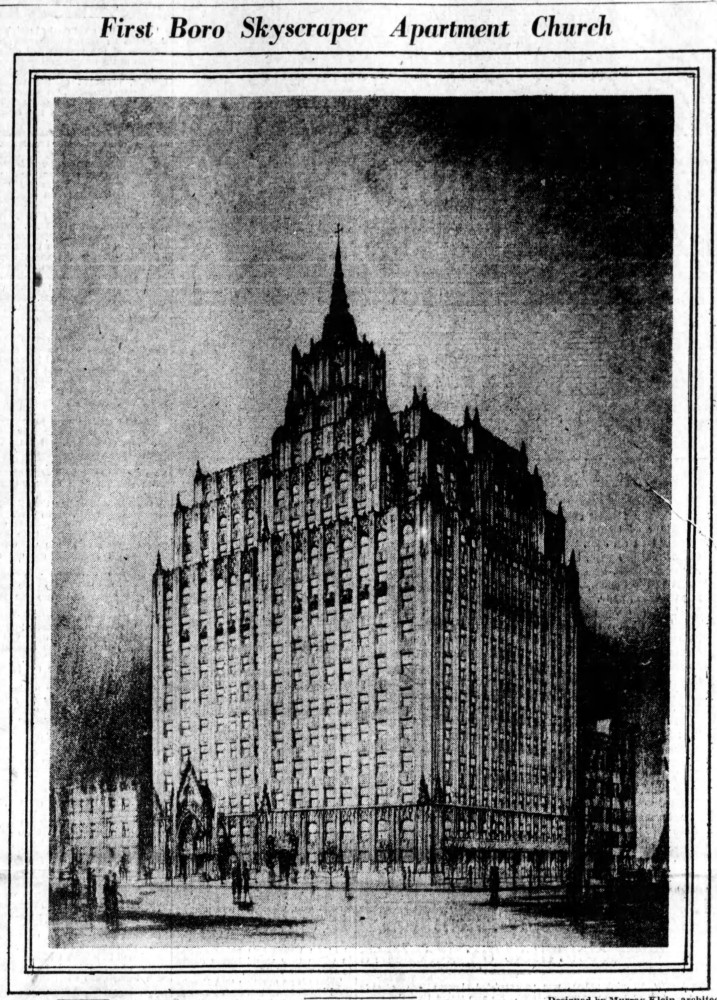
Brooklyn Eagle, 1930
It was thought that this location, so close to Grand Army Plaza, Prospect Park and the new luxury apartment buildings on Eastern Parkway and on Plaza Street, would be ideal for this new kind of building.
The church would have its own separate entrance and would not interact with the apartment building at all. In addition, there would be space on the ground floor for retail stores. Above would be one-bedroom and studio apartments.
The design would be Art Deco/Gothic, with Gothic details on the lower façade and in the setback towers. The windows of the church part would have stained glass, and the Gothic details would be cast in glazed terra cotta.
The church’s committee voted to tear down the present church and build the new building. The vote was almost unanimous, with only one dissent.
While they were practically giddy at the thought of building this, questions arose from the Eagle and others about the finances. How would a church apartment building be taxed? How would God and Mammon be separated in the world of high-finance real estate?
Would the church be running the building, or just a tenant? Who would collect the rents? Was it morally right for a church to be making money? Could real estate and religion coexist in Brooklyn?
After much excitement and discussion, Duryea decided against constructing the new building. The project had been pitched in 1929 and died a year later. The church decided to spend its money in expanding and repairing the building it had.
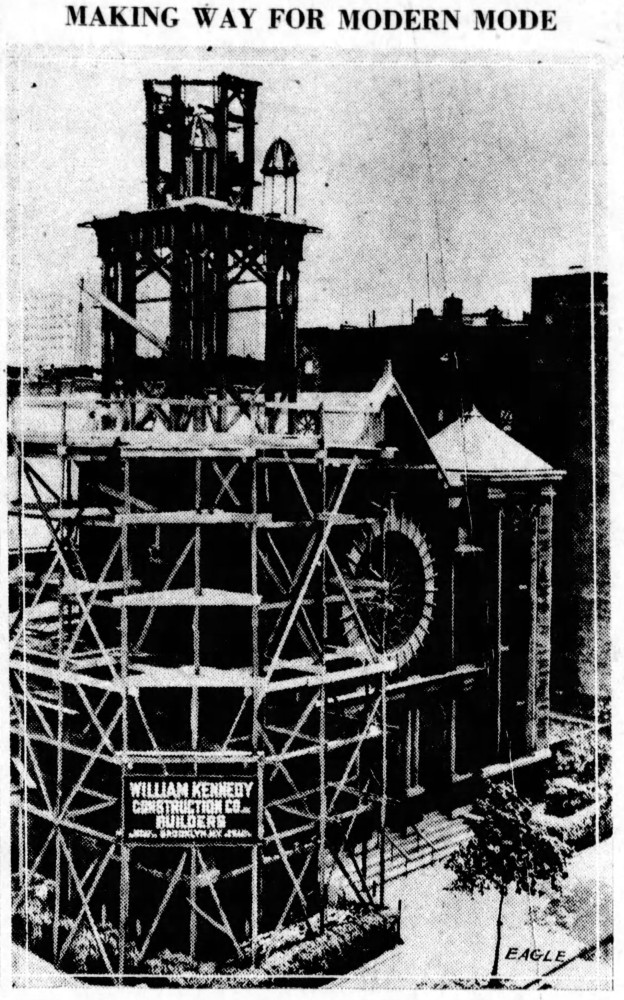
Brooklyn Eagle, 1931
They tore down the original domed steeple and capped off the steeple at its base. They also expanded the auditorium and renovated parts of the interior. The result is the church we see today.
More than likely, the real reason the church did not go ahead with its ambitious plans was simply the economy. The Great Depression killed a lot of interesting, as well as potentially disastrous projects. Would the building have succeeded? Would it have started a Brooklyn trend? We’ll never know. To my knowledge, no other skyscraper church exists in Brooklyn.
I’m glad the original church is still with us, still a rare sight in Prospect Heights.
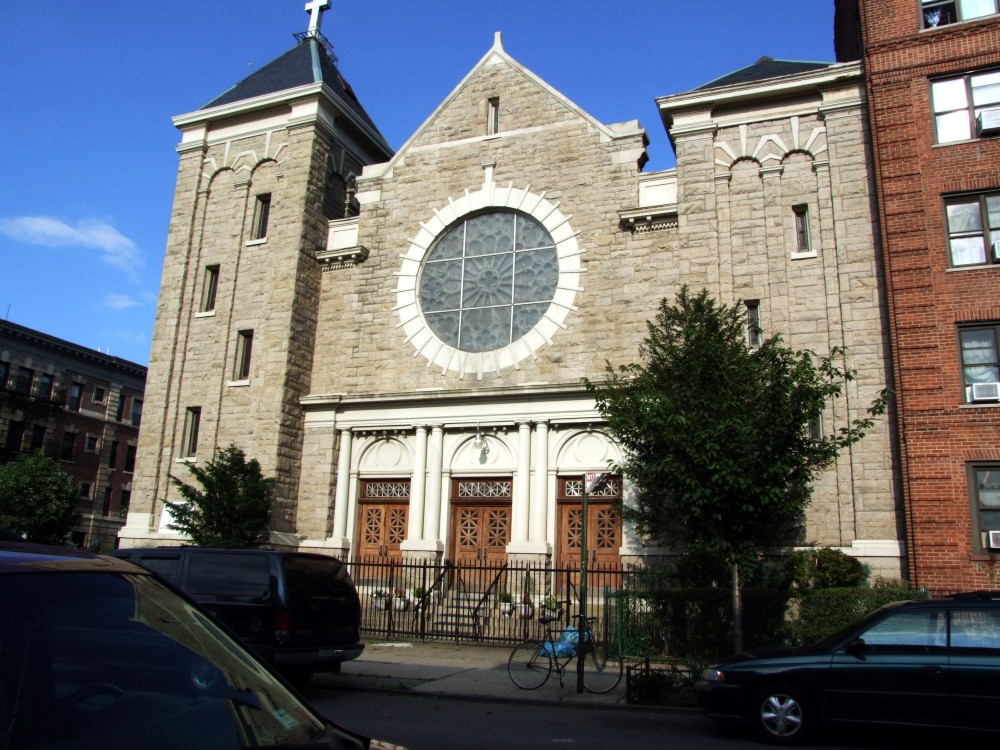
Photo – Suzanne Spellen

Photo: Brooklyn Public Library
Related Stories
Building of the Day: 17 Eastern Parkway
Building of the Day: 185 Underhill Avenue
Building of the Day: 67 Hanson Place

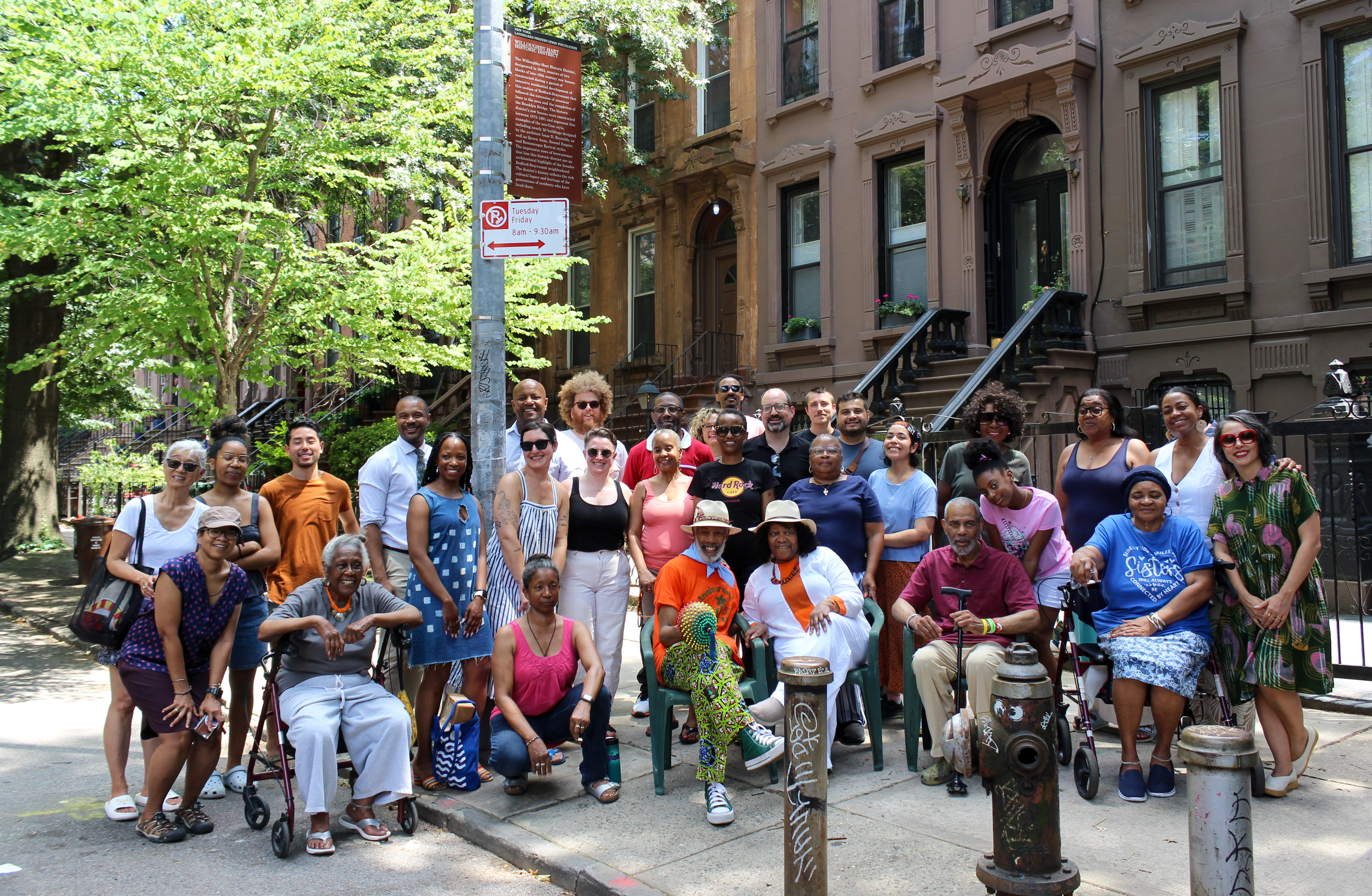
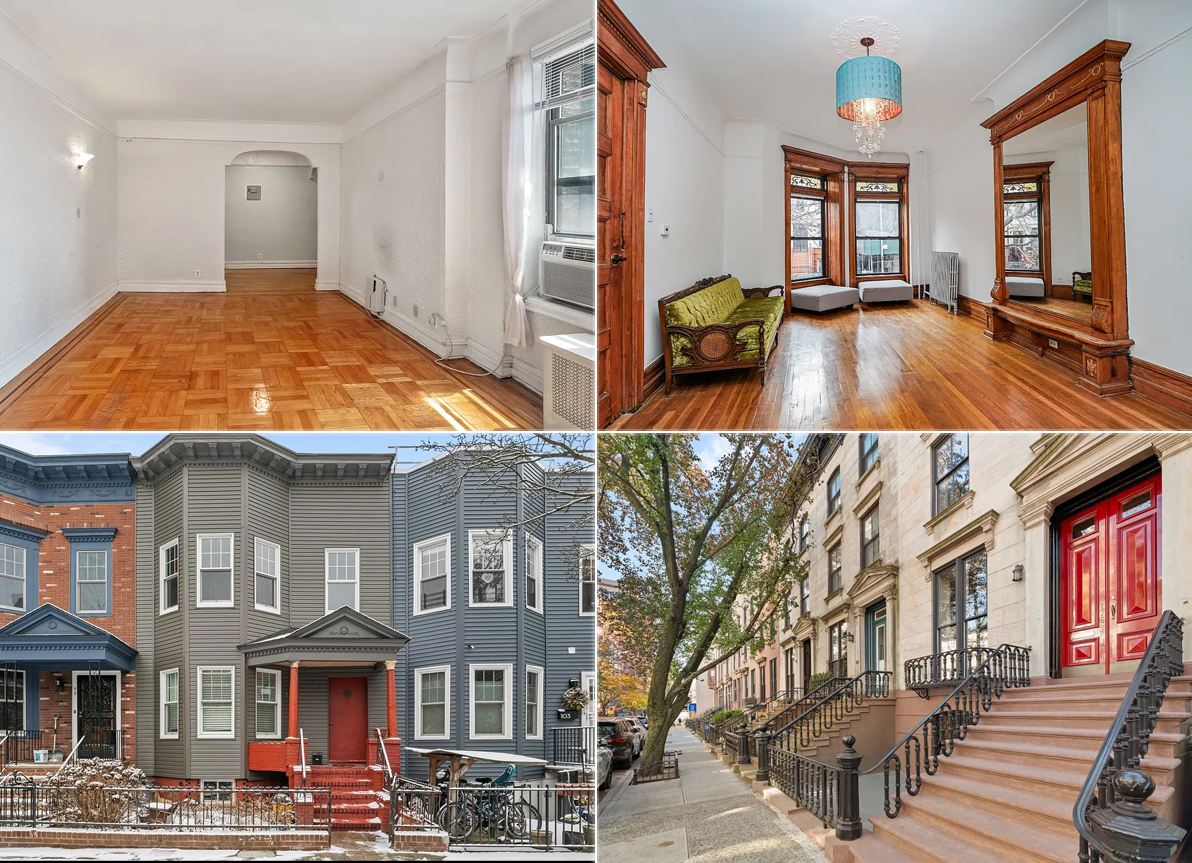
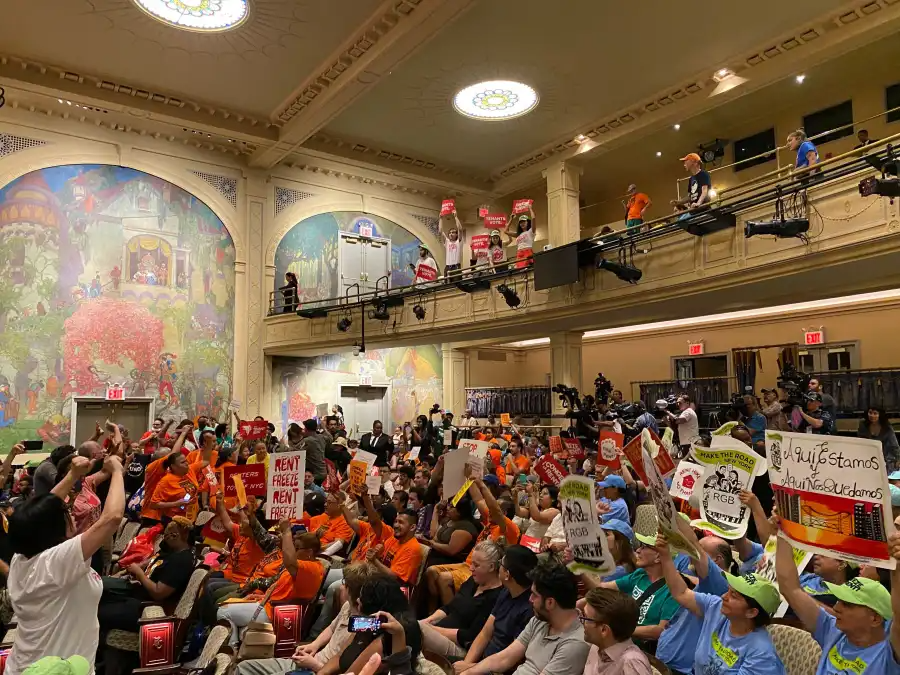
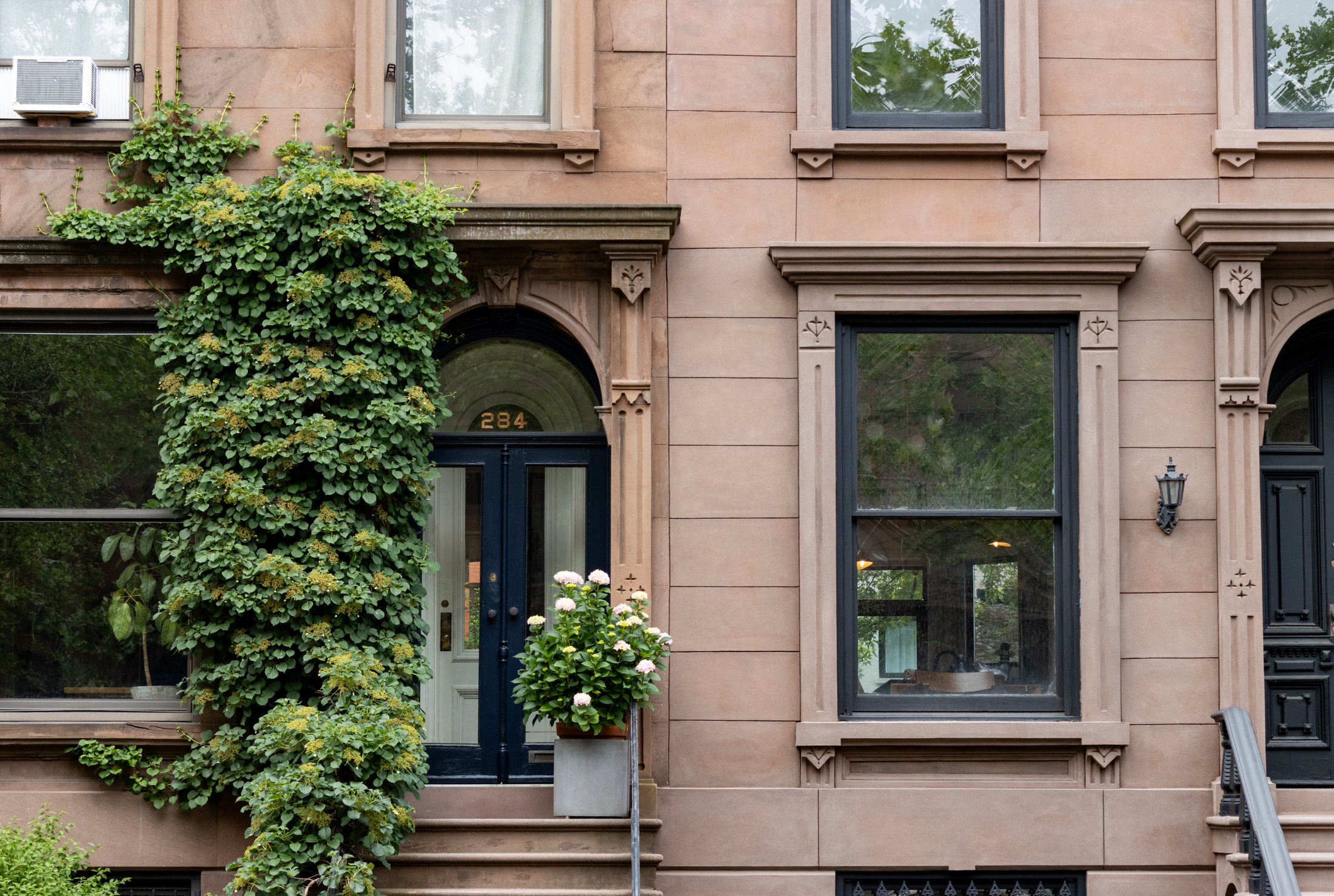
It is much diminished without the parish house and steeple, unfortunately. But still glad it is still there. Although the apartment building would have been even cooler.